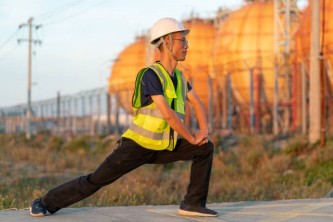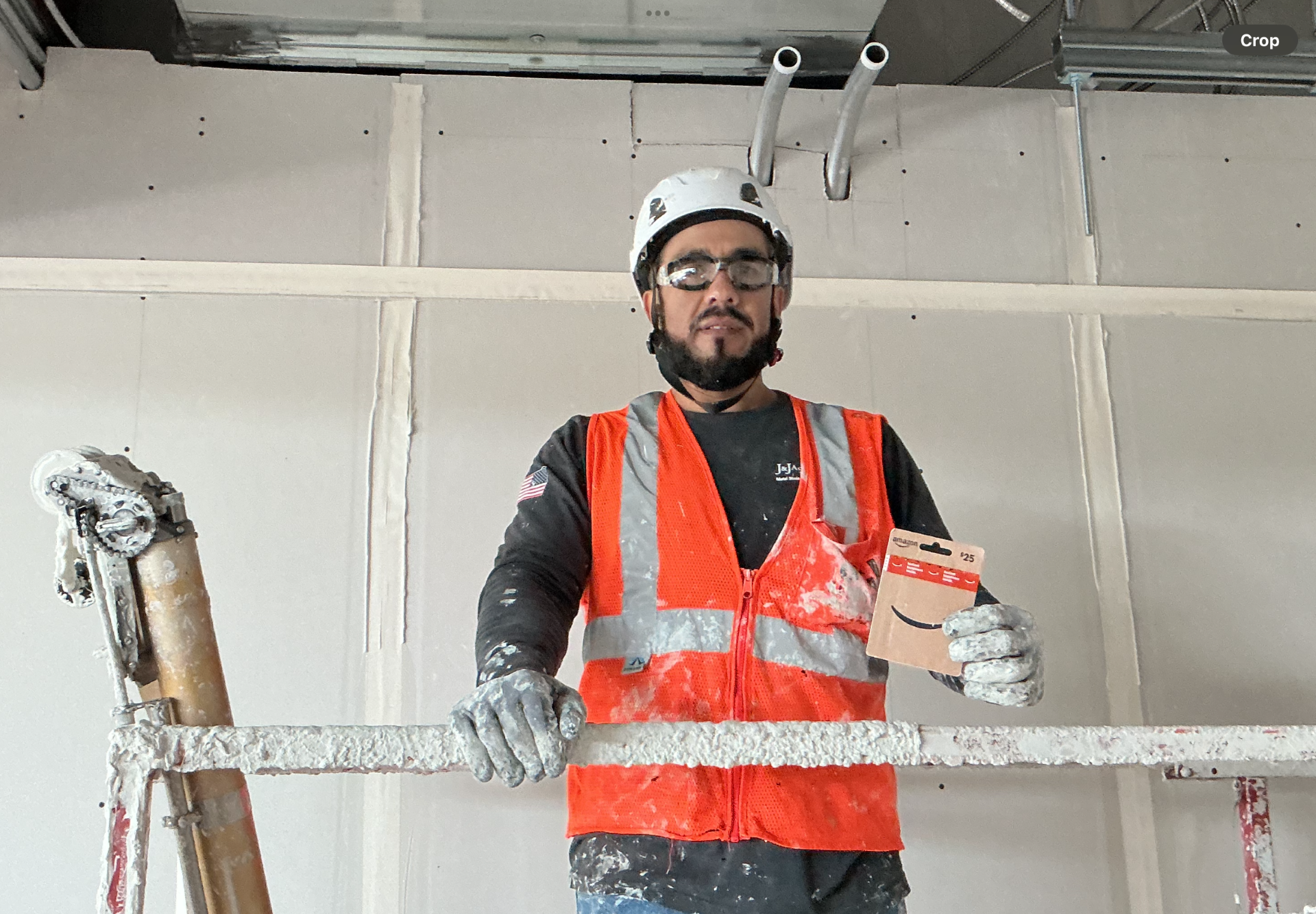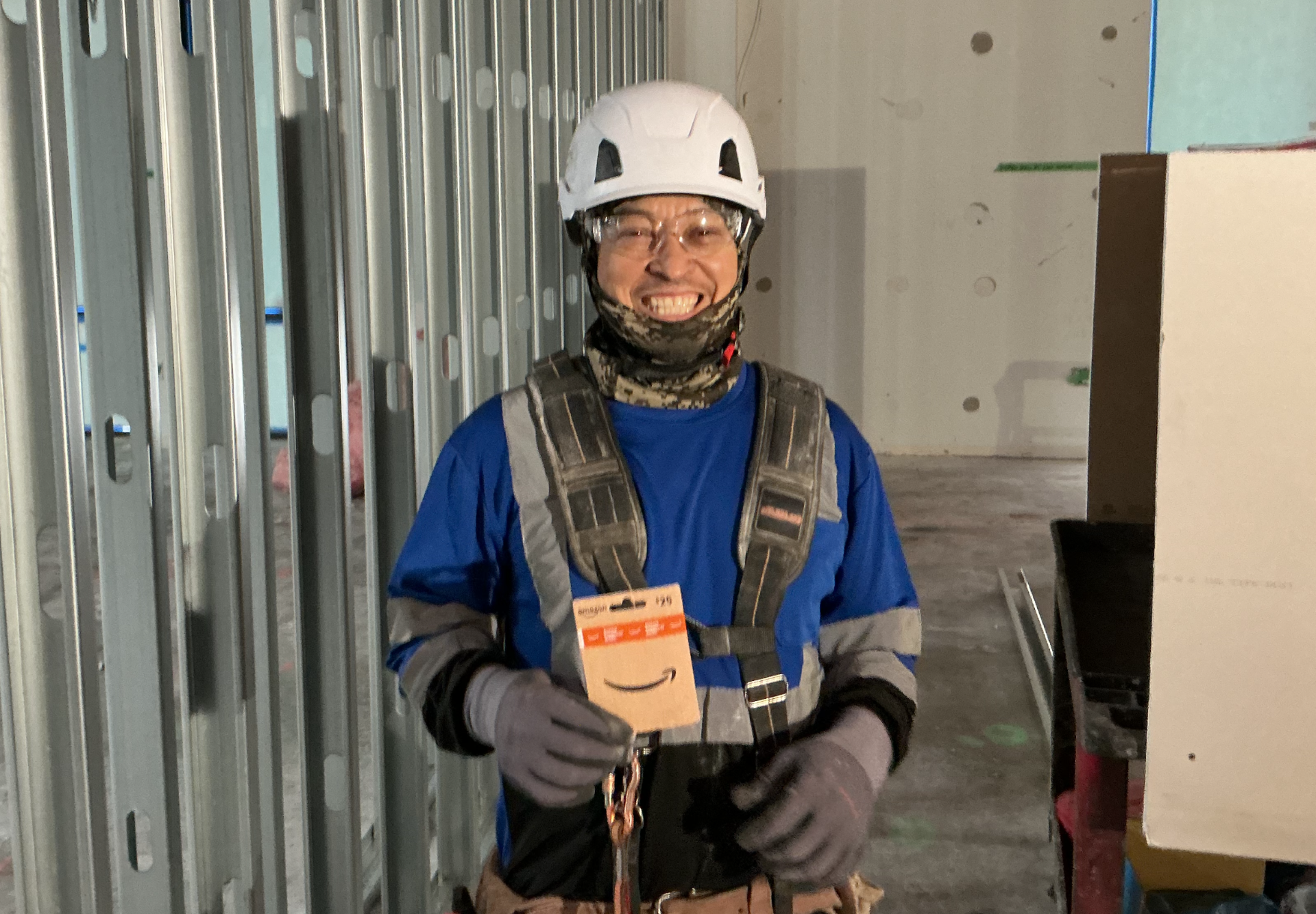Turns out, “Put your back into it!” wasn’t the best advice.
As Featured on AWCI Safety Blog
Written By Rick Wood, Field Superintendent & Safety Manager
J&J Acoustics, Inc.
My first job in construction was in 1985, I started working as a laborer on a 33-floor high rise in San Francisco. My daily activities besides cleaning up, consisted of moving materials up and down the stairways. If the workers didn’t have metal studs or drywall, production suffered. In those days, the only protocol for preventing back/soft tissue injuries was the old saying “put your back into it”. There was no Stretch and Flex or training on how to lift properly—it was “hurry up and git’ er’ done.”
After two years of being a laborer and twenty years as a drywall hanger & framer, I had developed severe sciatic/back problems, which in turn affected the rest of the body. I knew that, if I didn’t do something, the remaining part of my career was going to be spent in doctors’ offices, taking pills and not getting out to enjoy life with my family.

Pre-work stretch and flex programs are a critical component of effective safety and health programs.
Statistics show that soft tissue incidents are among the top 3 most common injuries in the construction industry. Soft tissue injuries can negatively affect quality of life for the worker, as they often can linger long after the injury takes place. The long recovery time and remaining side effects from the injury can hurt both a worker’s ability to do their job, as well as an employer’s ability to meet production demands.
Today we have a lot more information on how debilitating back and soft tissue injuries can be, but we also have much better resources to educate ourselves on how to remain healthy.
There are multiple reasons for these soft tissue injuries, and most of the root causes for these injuries can be prevented with proper training and vigilance on part of management and the employees.
Here are some of the causes of soft tissue injuries on the jobsite:
- Improper lifting techniques: this is when we lift drywall or studs and do not use our legs or balance the materials properly and put unnecessary stresses on the back and body.
- Lifting too much weight: this is self-explanatory—when we try to carry more weight than our body can tolerate.
- Awkward posture: like being on a scaffold that is too tall and having to crouch down while hanging a 12’ sheet of drywall on a ceiling, or standing on a ladder and twisting your body to reach out to an area to work.
- Overextending: for example, when you’re on a scissor lift and you cannot get close enough to your work area and you lean out too far with a taping bazooka and you put too much tension on the muscles.
It is the responsibility of the employer to ensure that their employees have the proper training and equipment to protect themselves and their co-workers. However, everyone can contribute by abiding by established safety protocols in order to help in creating a positive safety culture. An effective way to mitigate these injuries is through elimination and prevention; take a moment before we do these activities to see how it can be done properly.
Prevention—what can we do to prevent these injuries?
- Plan out your staging: put materials in the right area to eliminate the worker from having to carry the materials long distances.
- Stocking the scaffolding: by having the materials already on the level you need, this reduces having to lift it to each level.
- Team up: ask a coworker to help move heavier loads and do not overdo it. Asking for help on the jobsite should be encouraged by leadership.
- Pre-plan: discuss what heavy activities/stocking you need to do with your fellow employees, and how you plan to lift and move the materials. Make sure you are all on the same page.
- Work smarter, not harder: use equipment to help move materials (rock carts, buggies, forklifts, etc.).
It is important to take care of your body, especially if you do activities every day that require lifting and strenuous work. The best way to have a long, healthy career and a pain-free retirement is through some form of pre-work stretching, exercise and a healthy lifestyle.
Daily activities like a good stretch and flex program, lightweight training and walking are a few things you can do to not only make you feel better, but they can prolong your career.
Take action and get started on taking care of you:
- Cardio, as well as stretching, to ensure your body remains limber.
- A healthy diet, eating healthy and not overindulging.
- Active hobbies to get you moving in your free time (soccer, basketball, hiking, etc.)
Note: Always consult your physician before beginning any exercise program. This general information is not intended to diagnose any medical condition or to replace your healthcare professional. Consult with your healthcare professional to design an appropriate exercise prescription for you.
There are many ways to learn more about stretching, exercise and healthy eating programs on the web and multiple platforms online or through apps. These programs can help you plan out your healthy lifestyle.
Here are a few that I have found helpful:
- Start Stretching: Stretches & Flexibility Poses (Apple | Android)
- Yoga Time: For Beginners & All (Apple | Android)
- Home Workout: No Equipment Bodyweight Fitness & Training (Apple | Android)
There are a variety of mitigating factors when it comes to injuries on the jobsite. Most of them are preventable; devastating injuries can be avoided with proper training and establishing a good safety & health program. Soft tissue injuries can be particularly pernicious and a major detriment to the health and wellbeing of a worker. By taking the steps to learn the causes of these injuries, implementing prevention and taking action, you will be on the right path to a long, healthy career.
Rick Wood is a Field Superintendent & Safety Manager with AWCI Member J&J Acoustics, Inc. (Santa Clara, CA). Rick has spent the last 26 years with J&J Acoustics in various capacities, and serves as a member of AWCI’s Safety Directors’ Committee.





